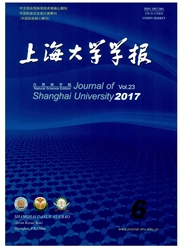

 中文摘要:
中文摘要:
分别采用压力板法和滤纸法对一种孔隙比大致相同的黏土进行了测量土水特征曲线的试验,并通过直剪仪试验测得不同含水率下该黏土的抗剪强度(简称强度).试验结果表明:压力板法和滤纸法测得的土水特征曲线大致相同;同样竖向压力下,抗剪强度随饱和度降低而增大,但饱和度很低时强度反而减小.饱和度主要影响黏聚力,对内摩擦角的影响不大.另外,应用土水特征曲线对非饱和黏土的强度进行了预测.通过引入有效饱和度的概念,对非饱和土强度公式进行修正,采用该公式预测非饱和土强度的精度比传统的平均骨架应力预测方法要高.
 英文摘要:
英文摘要:
The pressure plate method and filter paper method were used to measure the soil-water characteristic curve (SWCC) of clay with almost the same initial void ratio. Shear strength were obtained by performing a series of direct shear tests on the clay under different unsaturated conditions. SWCCs of the silty clay obtained with the pressure plate and filter paper methods were nearly the same. With the same pressure, shear strength increased with a decreasing degree of saturation, and decreases at a very low degree of saturation. The degree of saturation had great influence on cohesion and little influence on the internal friction angle. Shear strength of unsaturated clay was predicted using SWCC. To precisely predict shear strength, a concept of effective degree of saturation was introduced to modify the traditional strength formula of unsaturated clay. The modified formula could better predict tested data.
 同期刊论文项目
同期刊论文项目
 同项目期刊论文
同项目期刊论文
 期刊信息
期刊信息
